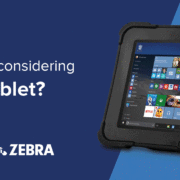As more omnichannel businesses compete to surpass customer demands, an expectation for faster and cheaper shipping has risen in today’s online shoppers. Over half of consumers expect both fast and trackable shipping from the warehouse to their doorstep. Evolving warehouses and distribution centers have now cited the following four top issues they face when attempting to shorten delivery times:
- Implementing direct-to-consumer (DTC) shipping – Last year’s spike in online orders resulted in a 70% increase in DTC shipping, further establishing expectations for faster delivery. Larger-scale warehouses have struggled with DTC as they must now open pallets to complete multiple smaller, yet unique orders as opposed to multiple identical orders. If done improperly, DTC order fulfillment can result in misplaced inventory and wrong shipments, ultimately impairing customer satisfaction and retention rates.
- Connecting delivery and loading dock teams – Order verification is one of the last touchpoints that can cause delays within the warehouse, yet it is crucial for accuracy. Delays in verification can result in missed delivery timeframes, which is why loading dock and T&L teams must proactively coordinate truck loading with order data readily available.
- Accelerating order picking without risking inaccuracies – Order picking accounts for nearly 50% of total operational expenses, which is why inefficient processes not only cause delays but also significant financial loss. Implementing optimized picking technologies has often been seen as a risk since even a slight decrease in productivity or downtime can halt operations.
- Maintaining real-time inventory updates for the whole supply chain – The more updated an inventory management system is, the less likely out-of-stocks will appear. However, for warehouses still relying on manual data entry, real-time visibility is a struggle since it would slow down fulfillment.
Overcoming the challenge with Zebra’s purpose-built solutions
Simply put, to operate within smaller delivery timeframes, warehouses must maximize both accuracy and speed simultaneously. Although there are many mobility solutions currently available for this, simplistic workflow changes and applications can also help eliminate unnecessary steps in the fulfillment process such as:
- Multiple barcode scanning – Going beyond traditional data capture, new applications like Zebra’s SimulScan and DataWedge allow workers to populate entire reports and forms with one trigger-pull by capturing multiple codes at one. This eliminates the need for individual scans and manual data entry, thus also preventing manual errors.
- Integrated push-to-talk and secured text messaging – Communication breakdowns prevent T&L teams from gaining the vital insight they need for efficient routing and delivery. That’s why push-to-talk applications like Zebra Workforce Connect continue to benefit modern delivery teams by streamlining communication channels and mobile computing through one device, giving both warehouse and T&L teams access to the critical data they need.
- Hands-free data capture – As mentioned before, manual data entry is time consuming and error-prone, which is why long-range and omnidirectional scanners have become so popular in today’s order fulfillment operations. Hands-free data capture takes these benefits a step farther by eliminating extensive training times since it merely builds on natural muscle movement, securing higher ergonomics for faster order processing.
- Visibility applications installed on your handheld device – Lastly, to keep inventory status visibility for everyone, tracking solutions like Zebra MotionWorks allows warehouses to monitor in-motion inventory, eliminating guesswork when it comes time to locate products in the warehouse. Furthermore, data can be shared between departments and steps within the supply chain to maximize visibility during inbound and outbound operations.
As technologies continue to mature, new demands are sure to take center stage. Consequently, Avalon continues to encourage warehouses and distribution centers to stay ahead of demands with a scalable modernization solution. To learn about how you can accelerate order fulfillment, contact Avalon’s modernization experts for more information.










